
Welcome to the Club of Amsterdam Journal.
The Club of Amsterdam wishes you Happy Holidays and an excellent 2007!
Felix Bopp, editor-in-chief

Together They Stand
   |
| by Evalueserve A vision without action is a daydream, but a vision with action can change the world. In the realm of trade and business today, India and the EU not only share the same vision of growth but also act closely to enhance the existing trading affairs.In the post-liberalisation era, the Indo-EU relationship has become an integral part of the global economy and has had a colossal impact on the international business environment.With BMWs running on Indian roads, Indians feasting on Italian pizzas, and Special Economic Zones (SEZs) in India flooded with European companies, the country is no longer perceived as the land of elephants and magicians.Nonetheless, the magic is vibrantly alive in the form of the socio-economic and socio-cultural changes that have primarily occurred as a result of easy trading and increased FDI across India’s diverse sectors. Europe, likewise, has greatly benefited from this thriving relationship.A country, which was largely influenced by the European continent in the colonial era, now happens to be the leading business partner of the geography holding manifold future business opportunities. |
| India-EU: Partners in Business The EU has emerged as India’s largest trading partner – EU’s share accounts for 23.7 percent of India’s total exports and 16.7 percent of the total Indian imports (in 2004-2005). Correspondingly, India’s share of total EU imports and exports is less than 2 percent but has been growing significantly in the recent years.Approximately 50 percent of the multinational companies operating in India are EU companies. The EU accounts for one of the largest contributions to FDI in India – the total FDI approvals for the EU have been approximately USD 17.1 billion between 1991 and September 2004, accounting for 25.4 percent of the total FDI approvals in India during this period. |
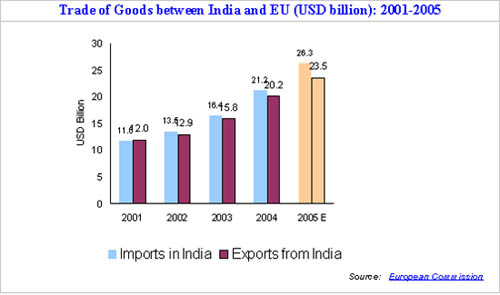 |
The European Union, with its 461 million citizens, has emerged as one of the largest potential markets for India. The India Story India’s GDP grew for the January through March 2006 quarter at 9.3 percent, beating market expectations. Full-year GDP growth for the fiscal year 2005/06 has been revised to 8.4 percent from a previous estimate of 8.1 percent.The investment and offshoring opportunities that India offers in manufacturing, R&D and services, span across a multitude of sectors. Cheap workforce, cheap raw materials, robust infrastructure and strong government support with added tax advantages make India an ideal destination for investment and offshoring.India is geographically close to new Asian markets and is itself a fast growing one. India also offers round-the-clock (24×7) work opportunities, enabling MNCs to reduce the time-to-market for their products. The easy availability of a vast talent pool that can undoubtedly beat its western counterparts, adds yet another feather to the much adorned Indian value proposition cap. Moving forward, the country boasts of housing the second-largest English-speaking manpower in the world.India is emerging as a major manufacturing base that is attracting multinational companies in every sector. The Ministry of Commerce, Government of India, has estimated that offshoring operations to India can result in a cost benefit of up to 40-60 percent when compared to offshoring to developed countries. A. T. Kearney’s latest FDI confidence ratings reflect this phenomenon with India moving up to the second place as the most attractive destination for FDI among manufacturing investors. India is also a preferred destination for R&D investment. It is the second-largest talent pool in the world, comprising engineers, scientists and a skilled technical workforce. It also presents significant cost savings and more value on every dollar spent on R&D. The Indian government has been a pioneer in R&D, especially in the social sector. It has been conducting research in agriculture, space, defence, healthcare and alternate energy since the past few decades. Developing as well as developed countries are now benefiting from India’s research in the social sector. Industry-led R&D is also witnessing a boom in India. The services sector accounts for approximately 50 percent of India’s GDP and holds immense opportunities for potential investment. Though BPO is a familiar term in India, terms such as KPO (Knowledge Process Outsourcing), EPO (Engineering Process Outsourcing) and LPO (Legal Process Outsourcing) are relatively new to the Indian lexicon. The Indian IT-ITES (Information Technology Enabled Services) sector revenues are expected to exceed USD 36 billion in 2006, registering a growth rate of approximately 28 percent. Software and software services exports are expected to grow by 32 percent in 2006. The Indian Information Technology industry is poised to generate revenues worth USD 54 billion by 2008. The fast growth in the Indian IT sector is primarily led by cost arbitrage among developed and developing countries. Besides the cost advantage, India’s large pool of skilled manpower offers unmatched advantages to IT companies operating in India 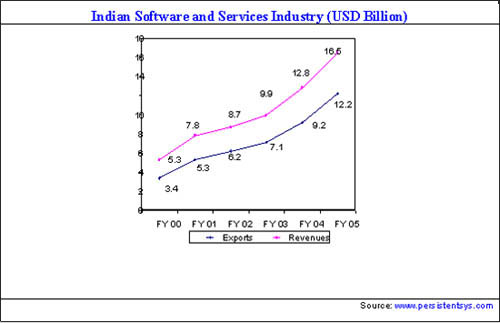 India-EU: The Action is Heating Up As the world takes cognisance, the phenomenal performance of the Indian economy has taken its business relations with the EU to greater heights. The majority of overseas acquisitions by Indian companies are in Europe, which comprises approximately 50 percent of the total mergers and acquisitions by Indian companies 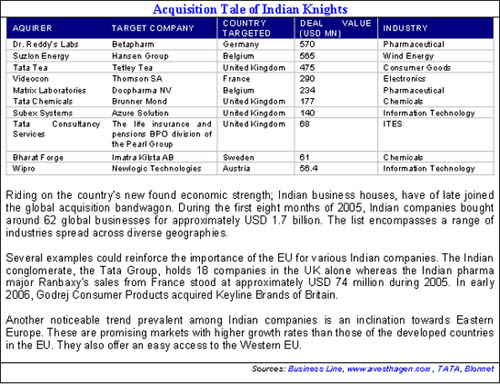 Many MNCs have initiated their R&D operations in an array of fields including IT/telecom, pharmaceuticals, biotechnology, chemicals, and consumer goods. Many EU companies have set up manufacturing bases in India to leverage advantages that India has to offer. Sweden based conglomerate, ABB, uses its Indian plant for manufacturing circuit breakers. After finding significant value in the venture, the company wants to add more products to the portfolio for its Indian plant. Another similar example is of German giant Siemens, which uses India for manufacturing many of its power transmission and distribution equipment components. The company has benefited by this exercise and has achieved 25-30 percent cost savings as compared to European and US costs.Mobile handset manufacturer Nokia is weighing the option of setting up its manufacturing plant in India. 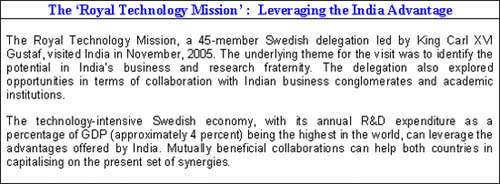 Public private partnerships have seen a rise with both industry and world class academic/research institutions gaining from the process. Further, the traditional knowledge that exists in India and has not yet been tapped for commercial use, can boost R&D in sectors such as medicine. In short, India offers immense opportunities for EU companies that hope to reduce their R&D expenditure and for European governments that are seeking commercially viable technologies via technology transfer. “India has the potential to become the number one knowledge-producing centre in the world by 2025, going by the way that things are moving.” – R A Mashelkar, Director General of Council of Scientific and Industrial Research (CSIR).  With its well-developed infrastructure, strong support from public administration, political and economic stability, easy access to potential and key markets and favourable tax structure, the EU also holds manifold investment opportunities for Indian companies. The UK, for instance, allows all R&D expenditure on plants, machineries and buildings to be written off in full in the first year. It has also launched schemes, such as Link, Smart and Eureka, to provide companies with the required assistance to establish themselves. As overseas investors, Indian companies would benefit as well because of opportunities such as skills’ transfer and capital creation. Realising the growing strategic importance of each other, the EU and India are evolving joint initiatives for cooperation in diverse areas such as civil aviation, maritime transport, science and technology, the space industry, and information technology and telecommunications. In terms of social cooperation, the EU and its member states are collectively the biggest bilateral contributors to India’s development plans. EU-India cooperation is based on the priority sectors of education, health and family welfare, and poverty alleviation. 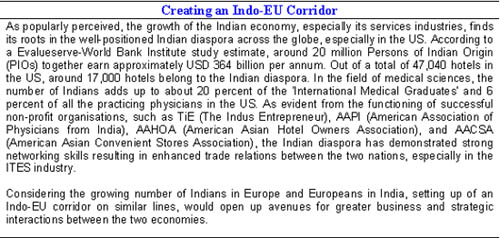 Reviewing Policies in the New Business Scenario The world’s two great economies need to review and revisit some of their policies and norms to reconsider their justifiability in the changing global economic scenario. In the face of globalisation, the EU must remain open and must also ensure that foreign markets are open to its own exports. The high tariff and non-tariff barriers levied against foreign companies pose challenges to European businesses accessing markets abroad. Removing such barriers is even more important in the services sector, which represents a major part of the EU economy but faces higher trade barriers than goods. EU’s long-debated subsidies to its rich farmers have had a detrimental effect on the livelihood of poor farmers in developing countries including India. Agriculture is the lifeline of the Indian economy and establishing a healthy agri-business relationship is a must for a successful Indo-EU relationship. Though Indian import barriers have been substantially reduced in the recent past, they continue to remain high by international standards. India also imposes a number of non-tariff barriers in the form of quantitative restrictions, import licensing, mandatory testing and certifications for a large number of products, as well as complicated and lengthy customs procedures. Adding Newer Dimensions May 01, 2004 saw the EU welcoming 10 new member countries into its fold. While it was a glorious moment in EU’s history, today, newer relations are being formed between India and the new and bigger EU. The enormous trade and investment potential that exists between India and the new EU member countries, needs to be tapped. Commercial arrangements, such as correspondent banking, export guarantees, insurance, etc., have to be strengthened at all levels. A key challenge from the Indian point of view is the fact that the EU’s relatively higher tariff regime and trade defence measures get extended to new member countries. On the other hand, the Indian government needs to address areas of concern such as bureaucratic and judicial delays, strict labour laws and poor reinforcement of intellectual property rights. A Euro 13.3 million Trade and Investment Development Programme (TIDP) has been initiated in May 2006. The objective of the programme is to assist India enhance its trade and investment performance with the EU. In the light of the fact that only large EU countries, such as Germany, the UK and Holland, are among the major FDI contributors to India, the TIDP would strive to enhance trade and investment between India other EU members. For a streamlined and momentous growth, learning from each others’ experiences is a must. By building a strong economic and political relationship, both India and the EU are set to send waves in the world politico- economic corridors. Two territories, so diverse in culture and geographical demographics, are evolving as major superpowers on the world map by learning form each other’s experiences and also by working together. The scope of this relationship is not limited only to the trade and business environment but also includes social, cultural and environmental cooperation. The recent global horror, terrorism, that has transmitted fear waves across the world, needs to be tackled together by synchronised and long-term action plans. Indo-EU interactions would provide a platform to the two mighty geographies, to grow mightier and together battle this menace and all other social menaces. And this will not be the end of their journey, this would be the beginning. Download the report as a *.pdf: click here |
Club of Amsterdam blog
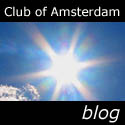 | Club of Amsterdam blog December 18: selflead December 14: On the Art of Value-Webbing October 26: Synthesis of elBulli cuisine October 14: The new Corinthians: How the Web is socialising journalism |
News about the Future

The Intelligent First Aid Kit, developed in partnership with the National Safety Council, combines supplies, visual instruction cards, and now an audio chip for verbal guidance of the most common injuries. The kit is separated into individually labeled and color-coded injury packs so the user has all the supplies and easy to follow instructions for managing a specific injury. The audio chip affixed to each injury card takes the technology a step further. By the press of a button, the chip narrates step by step instructions to manage the injury, pausing and repeating when necessary for accurate response.

China: Energy And The Environment
Energy Outlook 2007 by Forbes
[…] The World Bank has forecast that there will be 170 million vehicles on the roads in China by 2020, by which point the country would have overtaken the U.S. in total car ownership.
[…] China’s longer-term opportunity is to build an auto industry based not on the gasoline engine but on alternative fuels, skipping a generation of technology as it has done in areas such as telecoms.
It is a delicate balancing act: economic growth, public health and social stability. While China’s leaders know that, historically, challenges to Beijing’s power come from the countryside, it is in the many smog-ridden, traffic-clogged, dirty-water cities that a rising middle class may find political voice around the quality of urban life.
Next Season Event
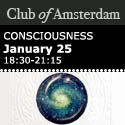 | the future of Consciousness Thursday, January 25, 2007 Registration: 18:30-19:00, Conference: 19:00-21:15 Where: EnlightenNext, Oudeschans 46a, 1011 LC Amsterdam Mauk Pieper, Trainer, Coach, Teacher Cultural development and the development of man as a new more conscious being have to go hand in hand. Arjan Kindermans, EnlightenNext Amsterdam Transcending and including individualism, how do you do that? George Pór, Founder, CommunityIntelligence Ltd. What Color is Your Collective Intelligence? Moderated by Lisette Thooft, Author, free lance journalist     Supporter  |
Recommended Book
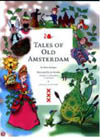
Tales of Old Amsterdam
by Henri Strategier
Henri Strategier investigated the mysteries surrounding many historic Amsterdam locations and events. He dug up details never previously published about – as an example – the three crosses of Andries that form the city’s emblem.
Mobility in Europe
 | Mobility in Europe Mass migration a myth in an enlarged Europe This report sets out a descriptive analysis of the data collected by the Eurobarometer Survey (2005). It examines two key areas of enquiry: geographical mobility and job mobility. Mobility appears to be not always the result of individual choices. Indeed, mobility, particularly job mobility, is often found to be a characteristic of the more vulnerable groups in society. The analysis also shows that mobility-related decisions are the result of important and often difficult trade-offs. People attracted by the idea of making a long-distance move report that they fear the loss of contact and support from family and relatives. It would also appear that what is good for the EU as a whole – greater overall levels of mobility – is not necessarily reflected in how individuals feel about mobility in their own lives. |
Only 4% of European citizens have ever moved to another country in the European Union and less than 3% to another country outside the EU, a study on Mobility in Europe by the European Foundation for the Improvement of Living and Working Conditions reveals. While European policy stresses the importance of mobility, the research findings beg the question: are Europeans afraid of change?
Geographical mobility is generally perceived as a ‘good thing’ for European integration by a solid majority of 62% of respondents, the Foundation’s new study on Mobility in Europe, has found. Mobility is also generally perceived as a good thing for the employment-related domains of ‘the labour market’ and ‘the economy’, as well as for the ‘individual’. The new report is a descriptive analysis of the data collected by a Eurobarometer survey in the second half of 2005, examining geographical mobility and job mobility in detail.
The survey results confirm the moderate rate of mobility across Europe: only 4% of EU citizens have ever moved to another country in the EU and less than 3% to another country outside the EU. Asked about their intentions to move in the future, only 3% of all EU citizens indicate that they might move to another EU country in the next five years. However, considerable variation does exist between countries.
‘Geographical mobility of labour remains a major policy challenge for Europe,’ says Jorma Karppinen, the Foundation’s Director. ‘On the one hand there is concern that too little geographical mobility between regions and Member States will have negative consequences on labour market adaptability and competitiveness. On the other hand, the difficulties posed by a ‘brain (and youth) drain’ may be far more serious for the poorer regions of eastern Europe than the challenges which will face the richer parts of central and northern Europe in trying to integrate migrant workers.’
The pattern of future labour migration from the new Member States to the EU15 countries is set to vary widely, while its overall extent will remain limited, the Foundation predicts. In the medium- to long-term, however, it warns that the greatest challenges lie in the impact of youth and ‘brain drain’ for the sending rather than the receiving countries.
The research examines the different reasons why people would want to migrate. In the new Member States, work-related factors such as higher household income (59%) and better working conditions (57%), as well as the opportunity to discover new things (30%), feature high on the list of priorities. In contrast, in the EU15 countries, reasons why people would want to migrate fall into the ‘lifestyle and fun’ category: discovering new environments (64%) and meeting new people (39%). A quarter of respondents from the EU15 countries mentioned ‘better weather’ as a serious reason to migrate.
On the Art of Value-Webbing
 | By Arnab B. ChowdhuryArnab B. Chowdhury is founder and CEO of Ninad (www.ninad.biz) – an international e-Learning consulting firm, headquartered at Pondichéry, south India. |
Abstract
Surviving the challenges brought about by the emerging Information Society requires the Strategist to transcend the age-old zero-sum-driven mindset wherein gain for one must result in an equal loss for other competitors.
If competition is all about increasing one’s market share then collaboration could be defined as creating new opportunities and enlarging the existing market fringes. These two diametrically opposing stances are fusing to form the observed phenomenon termed ‘Value-Web’ – wherein any single process is co-owned and co-operated by several distinct organizations.
This article analyses aspects of the Value-Web phenomenon and implies why the Strategist will need it as an essential tool to build a platform of mutualism that will eventually benefit any organization to sustain and grow organically in an increasingly complex marketplace.
Today, it is often difficult for organizations to maneuver the future singlehandedly. Surviving the challenges brought about by the emerging Information Society requires the Strategist to transcend the age-old zerosum-driven mindset wherein gain for one must result in an equal loss for other competitors.
Let us sift through the paradigm changes in the global economy over the millennia with the agricultural leading to the industrial that is paving the way to the information-based economy.
Consider the agricultural economy where people toiled with the land creating products again from the land with purely physical means implying a focus that was centered on ‘physical’ activity and well-being. Individuals and tribes fought and competed for more arable land and water – ‘physical’ possessions that implied power and control over one’s present and future.
With the industrial economy, the focus scaled up to create synergies of flows of raw physical material along with human resources and information to create products and services for mass consumption. Here, financial results determine the power and well-being of the organization. Here, we witness heightened emotional or ‘vital’ complexity vis-à-vis operations and control in terms of planning, competition, collaboration and marketing with other individuals and organizations specializing in different functions.
In the emerging information-based economy the focus shifts to the realm of ideas and concepts. Organizations have already begun to redefine their operations such as procurement and marketing, by applying contextually focused information to nurture their partners, suppliers and clients while smartly leveraging upon Information Technology. Here, we sense an increased ‘mental’ focus wherein perhaps immediacy, globalisation, digitisation and virtualisation are beginning to emerge as its cornerstones.
At a ‘physical’ level, where all customers, processes, products, markets and strategies are relatively fixed, the Strategist sustains the organization by continuing to compete with other organizations in yesterday’s market space. The same attitude can be attributed albeit perhaps with greater complexity at the ‘vital’ level where focus shifts to financial figures that percolate down to market share, investment and sales numbers. It is only when the organization rises to the ‘mental’ level with a concept-led mindset that the raison d’être for Value-Webbing emerges when the Strategist realizes that for long-term sustainability competition and collaboration have to occur simultaneously.
Perhaps at this level, the notion of ‘competitors’ changes from rivalry, as in preceding levels, to ‘co-opetitive-agents’, where each organization brings its unique value to the table with the aim of widening the size of the market and gamut of products and services offered, through co-sustenance. In this mode, the market space is proactively weaved with synergetic relationships whereby hybrid multi-organizations co-opt the resources of competitors. If competition is all about increasing one’s market share then collaboration could be defined as creating new opportunities and enlarging the existing market fringes. These two diametrically opposing stances are fusing to form the phenomenon termed ‘Value-Web’ – wherein any single process is coowned and co-operated by several distinct organizations.
Empirically, the process of Value-Webbing is not just taking shape between organizations of distinct industries but interestingly enough even between apparent competitors in the same market space. To illustrate the first instance, observe Fedex renting out its competency of logistics to other firms in such a manner that it seems that the renters’ logistics function is their own. An example of Value-Webbing between competitors is exemplified by the collaborative effort of Indian steel giants Tata Steel and Steel Authority of India Limited who have forged a joint e-venture called metaljunction.com wherein they primarily facilitate e-selling in the metal and mineral market space.
In the context of concurrent collaboration with competition or ‘coopetition’, collaboration between competing organizations typically takes place at two levels — horizontal and vertical.
In the horizontal collaborative model, competing organizations tend to create a platform of mutualism to form new extended markets. This is perhaps best illustrated by observing technology-driven initiatives in any given industrial sector, wherein consortiums are formed by competing organizations so that they may strive to create and evolve new standards on which the member organizations and others can compete in a larger and sometimes altogether new market space. The development of SET (Secure Electronic Transaction) standard for secure financial transactions across the Internet by archrivals VISA and MasterCard is a relevant example. Another case is that of the European Broadcasting Union (EBU) that acts as broker through which even competing broadcasters exchange radio and television services.
In the vertical collaborative model, organizations competing in one market space collaborate in another market space at a different position in the product or service spectrum. Such collaborative efforts take place typically among players who are already well entrenched in their chosen areas but form synergetic relationships to exploit unexplored lacuna market opportunities. Microsoft/Intel’s WINTEL standard on PCs competes with Apple’s Macintosh/MacOS platform while interestingly enough Microsoft Office products from Microsoft are still successfully marketed on the MacOS.
No matter which industry one is in, the primordial perspective for the Strategist is to sense at what level the organization is essentially operating at – whether ‘physical’, ‘vital’ or ‘mental’.
Next, one has to realize and accept the premise that for any individual or organization to be self-sustainable and therefore successful in the long run, it must be unique. Developing such insight will also provide an important lever by which the participating organization’s evolutionary power may be developed. This aptitude becomes imperative for long-term sustainability in the case of a Value-Web system that typically involves multi-ownership processes.
In all, it seems it is now time for the Strategist to transcend the individualistic-driven win-lose mindset and consider leveraging the increasingly perceptible Value-Web phenomenon by realizing the uniqueness in organizations. This operative mode is a means to build a platform of mutualism that will eventually benefit any organization to sustain and grow organically in an increasingly complex marketplace.
This article has been published at ‘La Revue Agir’.
Agenda

Our Season Events for 2006/2007 are on Thursdays: |
| the future of Consciousness January 25, 2007, 18:30 – 21:15 the future of Ambient Intelligence February 22, 2007, 18:30 – 21:15 the future of Global Workplace March 29, 2007, 18:30 – 21:15 the future of Success April 26, 2007, 18:30 – 21:15 the future of Tourism May 31, 2007, 18:30 – 21:15 Taste of Diversity June 28, 2007, 18:30 – 21:15 |

2-days LABs in Girona, Spain, moderated by Humberto Schwab: LAB on Old and New ENERGY, April 17/18, 2007 LAB on MEDIA and Human Experience, May 29/30, 2007 |
Club of Amsterdam Open Business Club
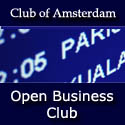 | Club of Amsterdam Open Business Club Are you interested in networking, sharing visions, ideas about your future, the future of your industry, society, discussing issues, which are relevant for yourself as well as for the ‘global’ community? The future starts now – join our online platform … |



Customer Reviews
Thanks for submitting your comment!